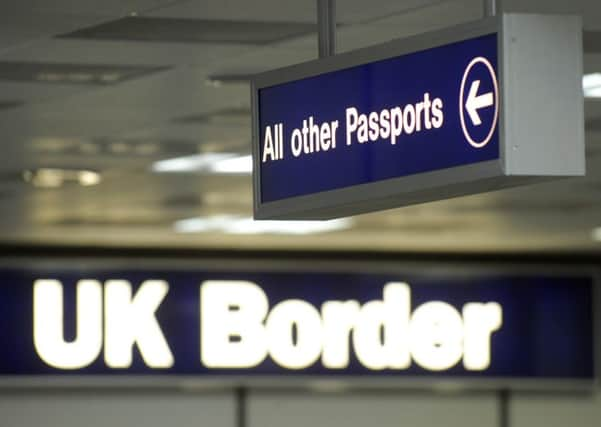Net migration falls by a quarter as EU citizens leave UK


The overall measure - the difference between the number of people arriving and leaving the country - was estimated to be 248,000 last year.
This was a “statistically significant” fall of 84,000 compared with the figure recorded in 2015, the Office for National Statistics (ONS) said.
Advertisement
Hide AdAdvertisement
Hide AdStatisticians said the change in long-term international net migration - covering people coming to and leaving the country for at least 12 months - was driven by a rise in emigration, which was up 40,000 on 2015.
This was made up mainly of EU citizens, with the number departing at an estimated 117,000 - a rise of 31,000 on the previous 12 months.
Immigration - just those arriving - was at 588,000 last year, a fall of 43,000 year on year, although the ONS said this was not a statistically significant decrease.
The figures - the last official migration data before next month’s election - show citizens from eight central and eastern European nations have partly driven the changes.
Immigration from EU8 states - the Czech Republic, Estonia, Hungary, Latvia, Lithuania, Poland, Slovakia and Slovenia - was down by 25,000 to 48,000, while emigration increased by 16,000 to 43,000 last year.
These were both statistically significant changes and resulted in the smallest net migration estimate, of 5,000, for the group of nations since they joined the EU in 2004.
The last time overall net migration, which covers the EU and the rest of the world, was below 250,000 was in the year to March 2014.
The Conservatives have maintained their objective of reducing annual net migration to the tens of thousands ahead of the poll on June 8.
Advertisement
Hide AdAdvertisement
Hide AdIn its election manifesto, Labour said it was offering “fair rules and reasonable management of migration” - but dismissed targets as “bogus”.
The new figures give the fullest picture yet of immigration around the EU referendum vote last year.
Britain’s settlement following departure from the bloc is expected to include restrictions on free movement rules, although the precise arrangements for post-Brexit immigration are yet to be thrashed out.
The official figures also showed that:
-Net migration from the whole of the EU was 133,000 in 2016, down 28% on 2015;
-There was a statistically significant increase in the estimated number of non-British citizens going home to live, largely accounted for by EU nationals;
-Non-EU net migration was estimated to be 175,000 last year, a fall of 14,000 compared with the previous year;
-Work remains the most common reason for international migration, with 275,000 people immigrating for employment, the majority of whom had a definite job (180,000);
